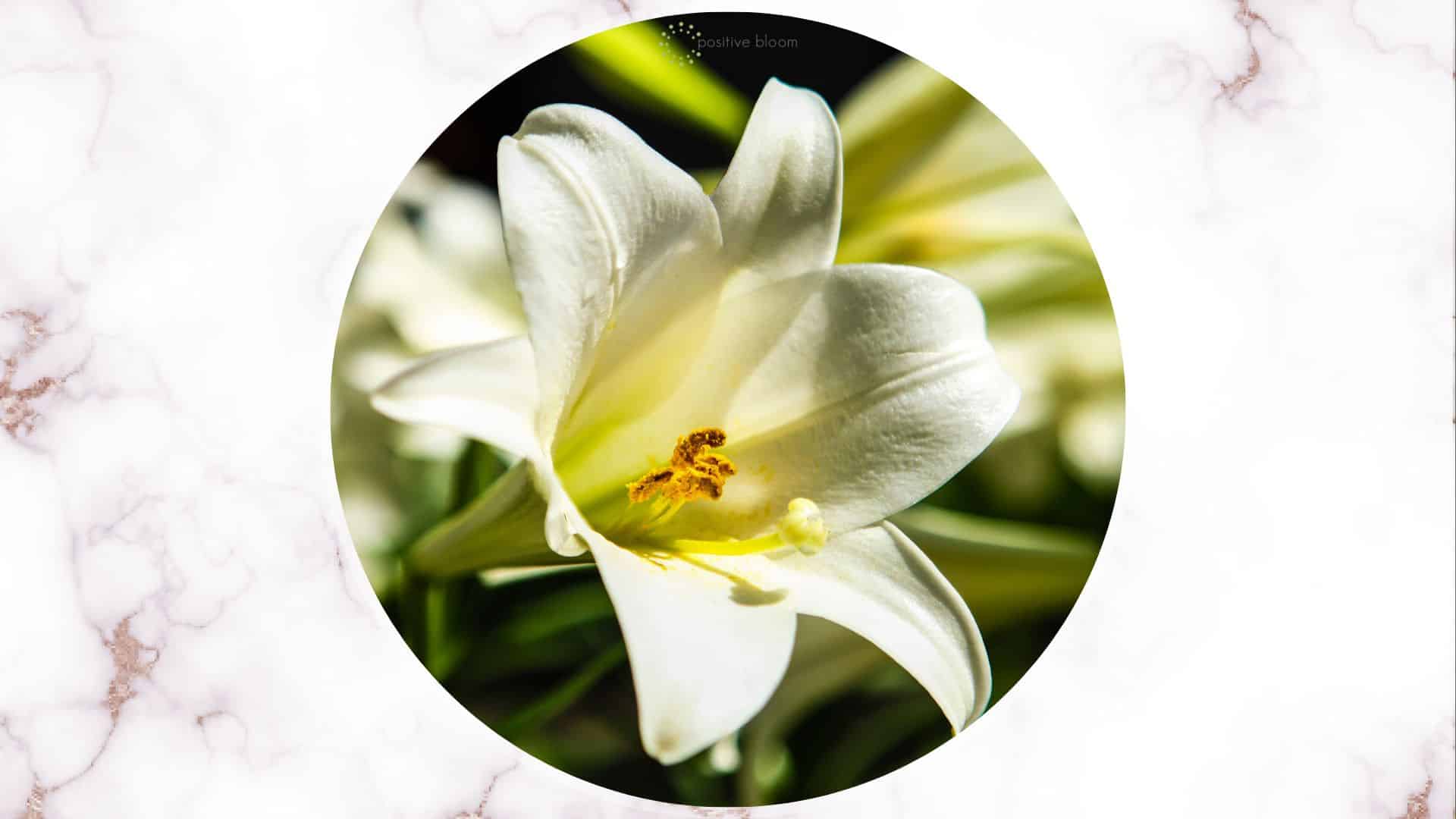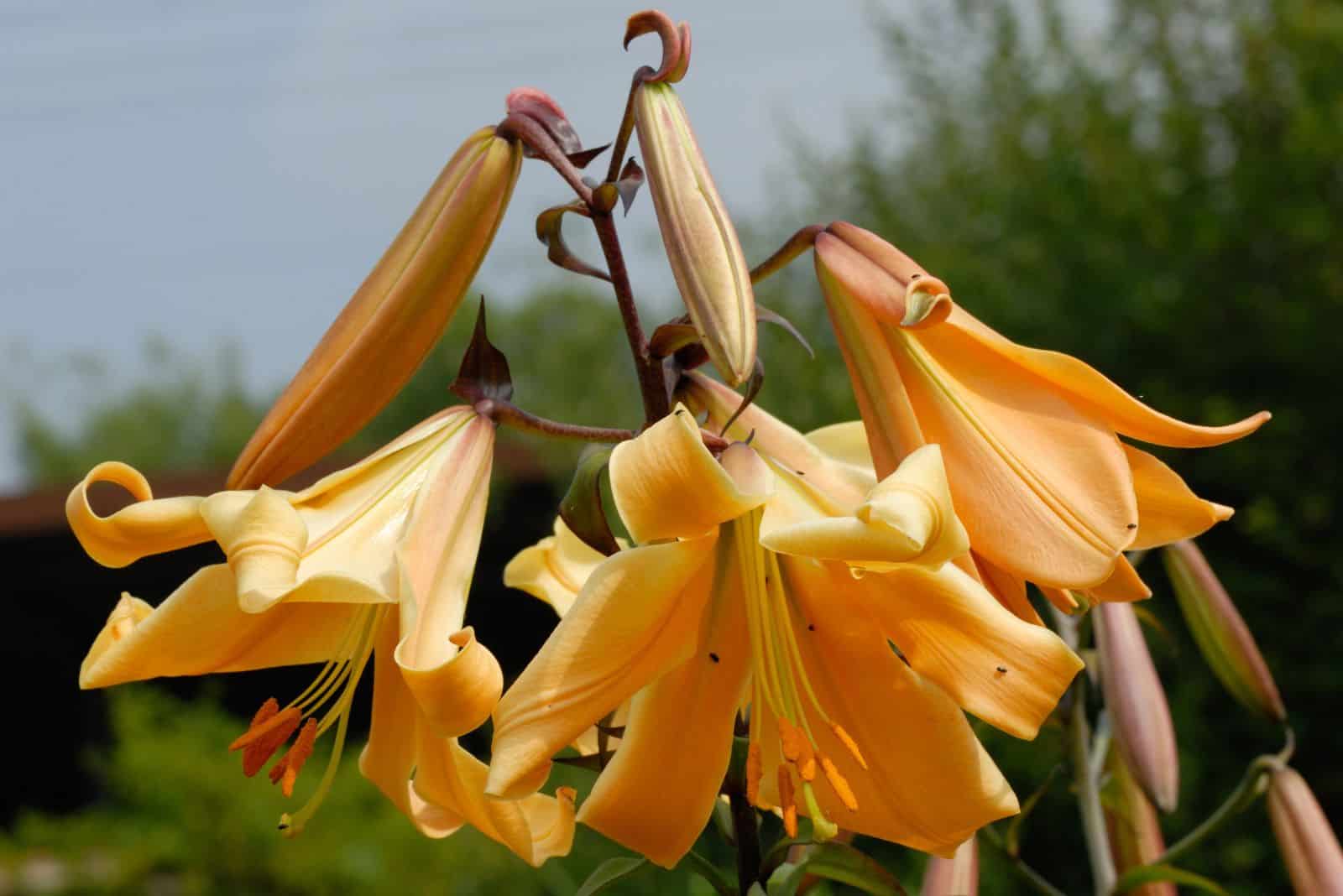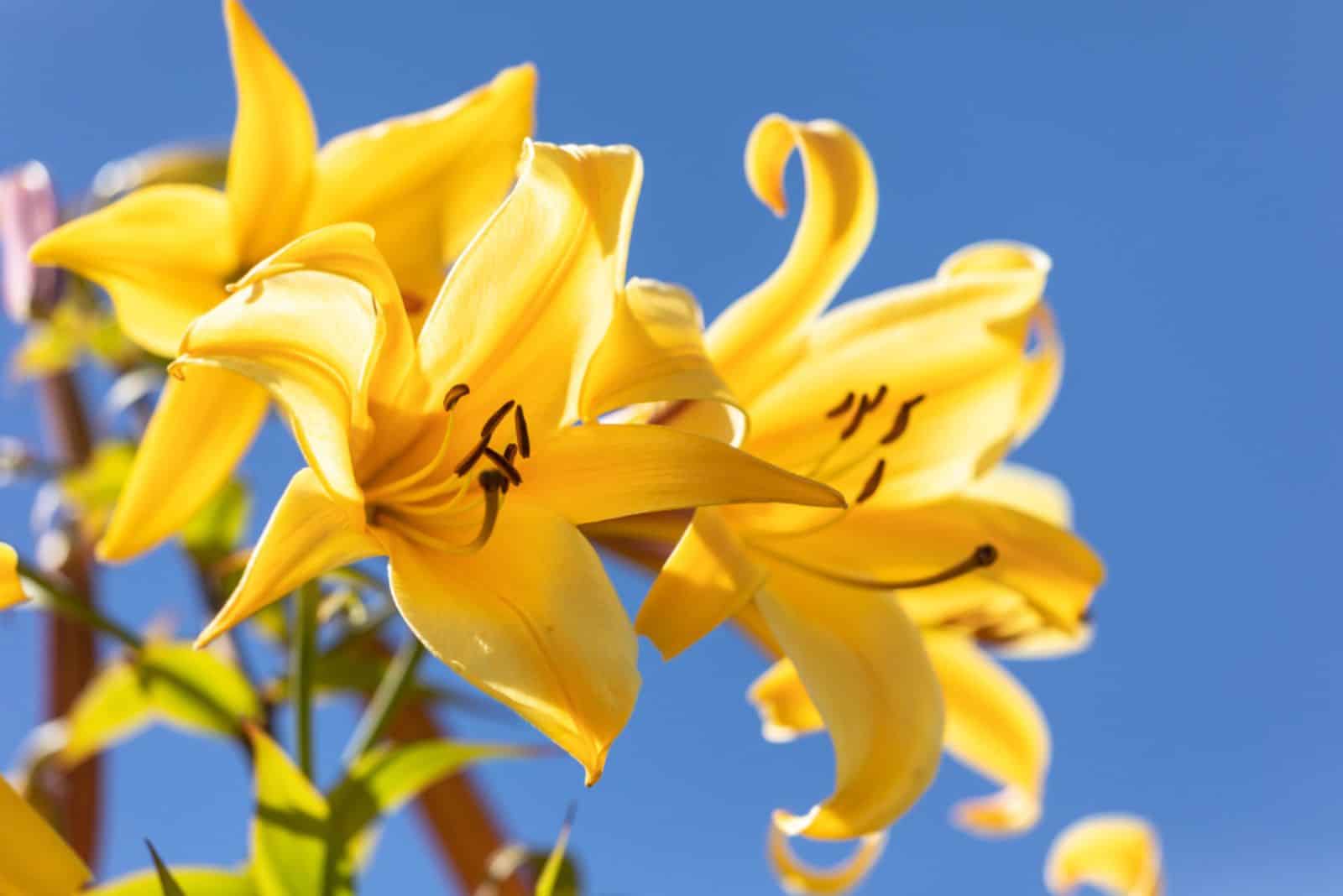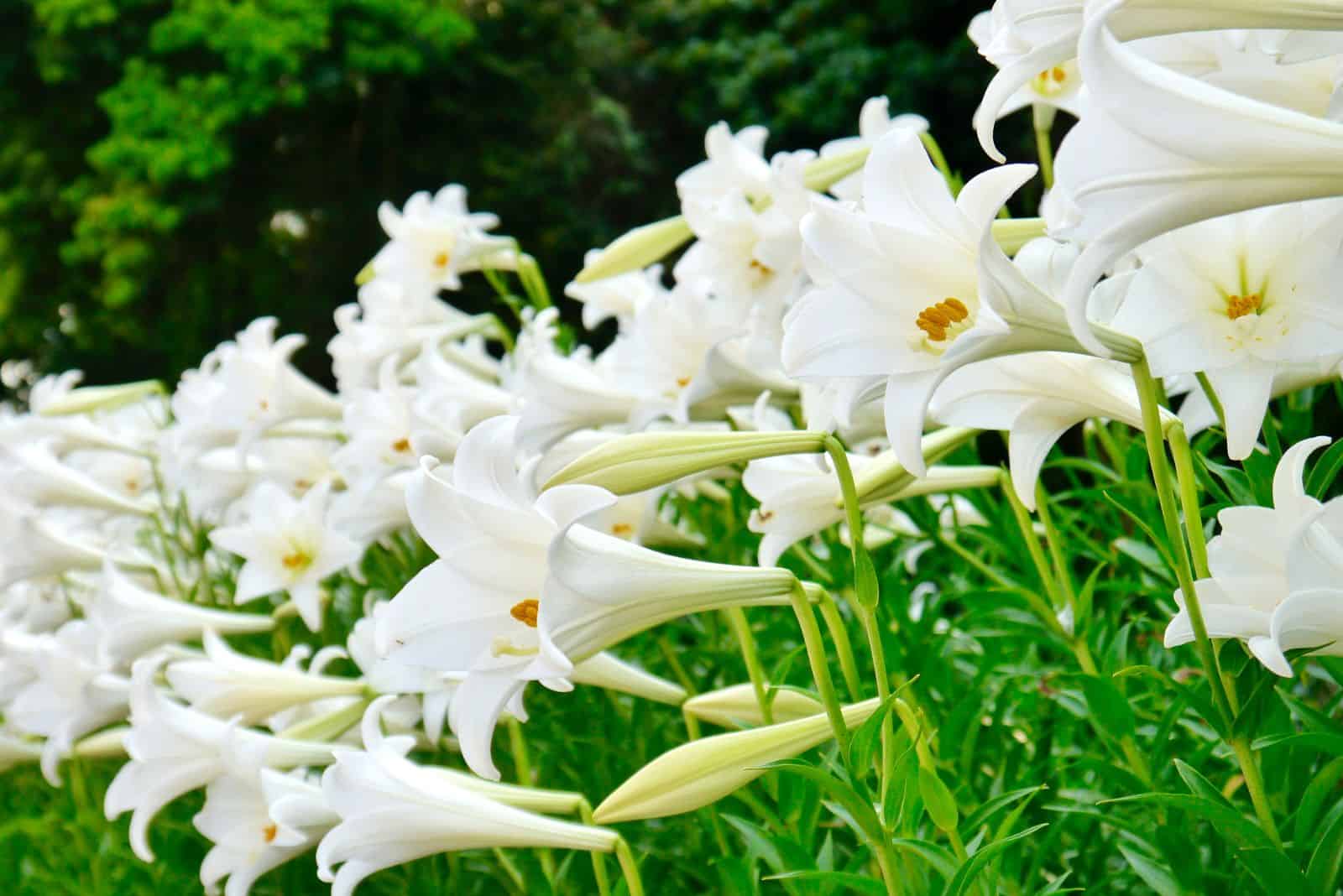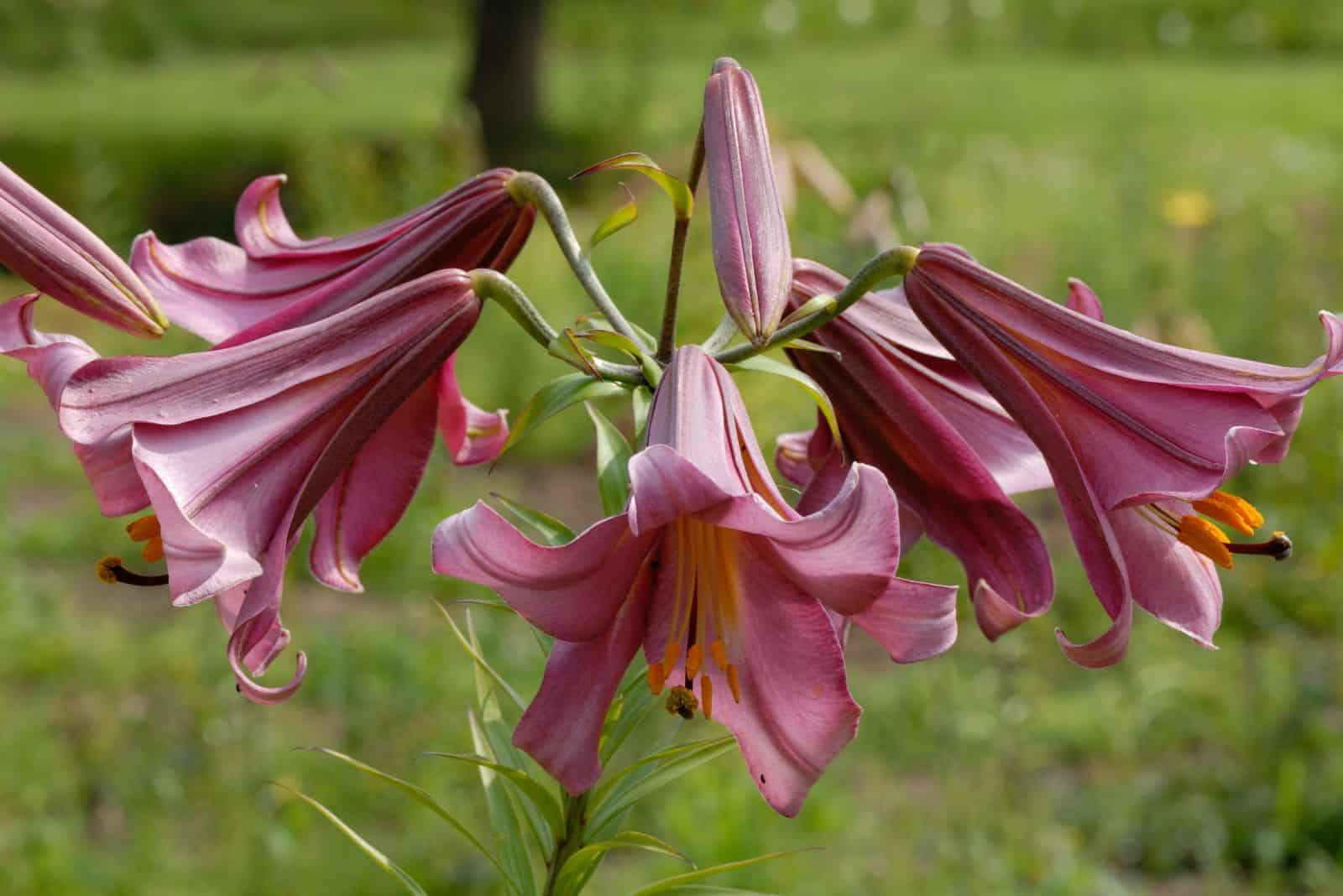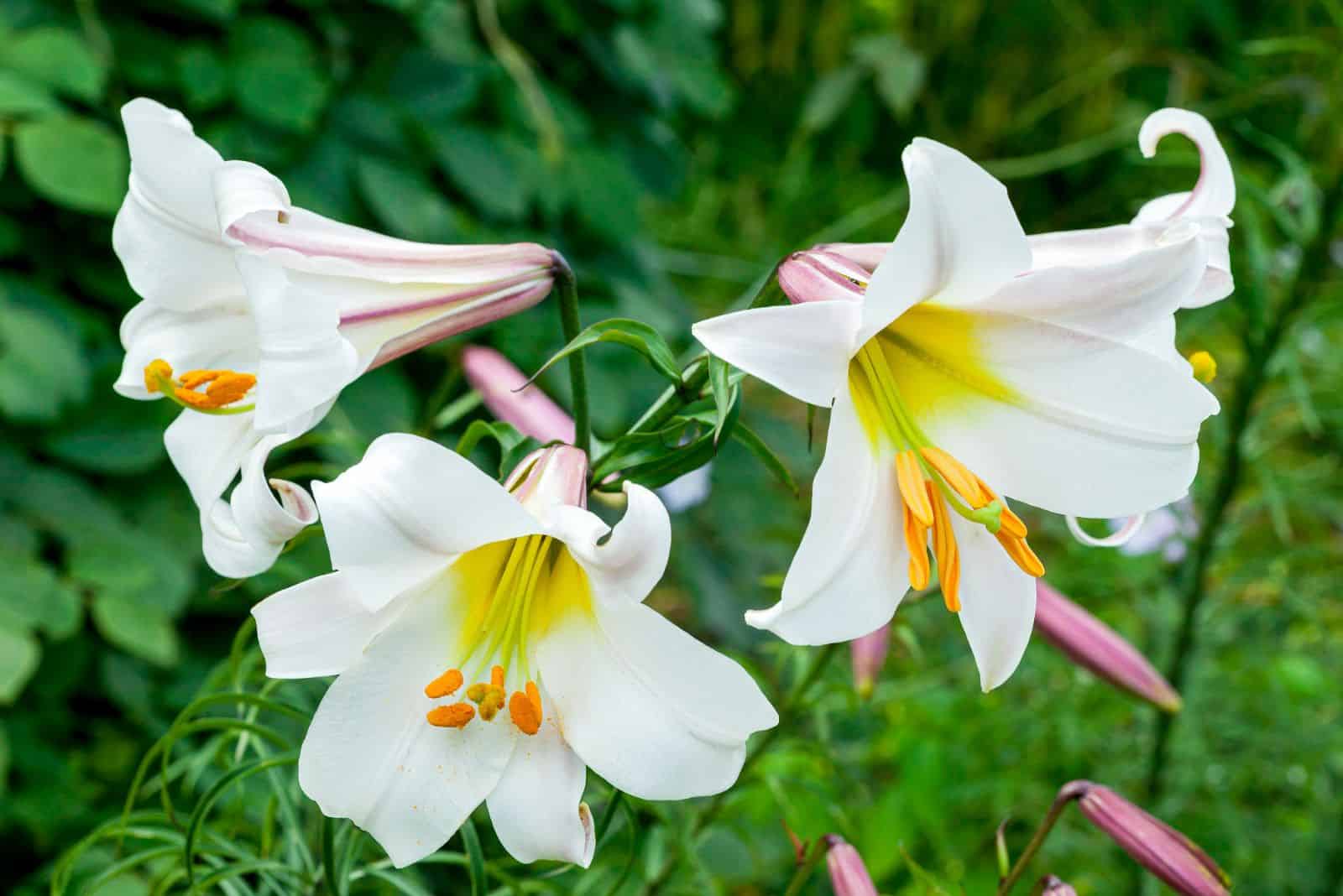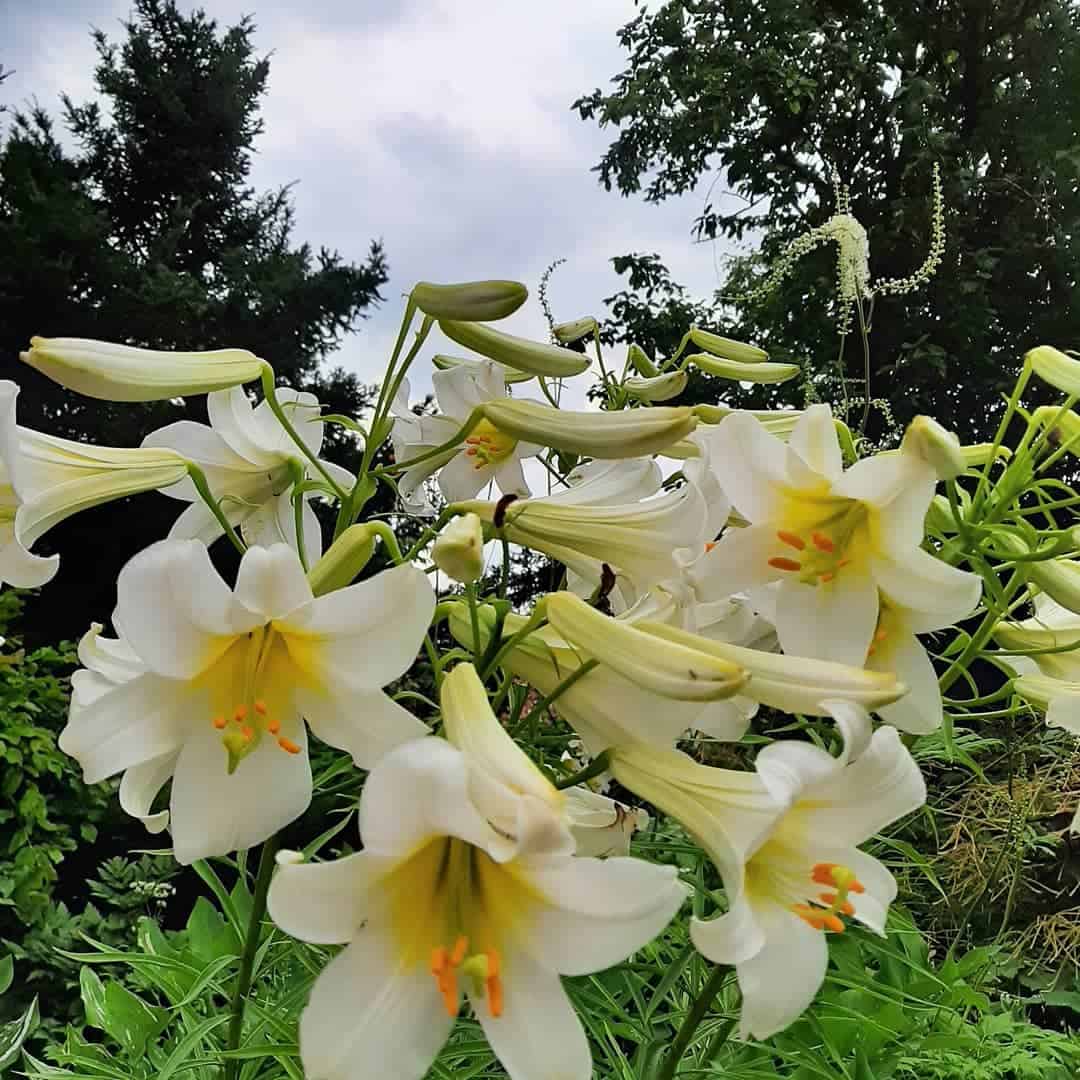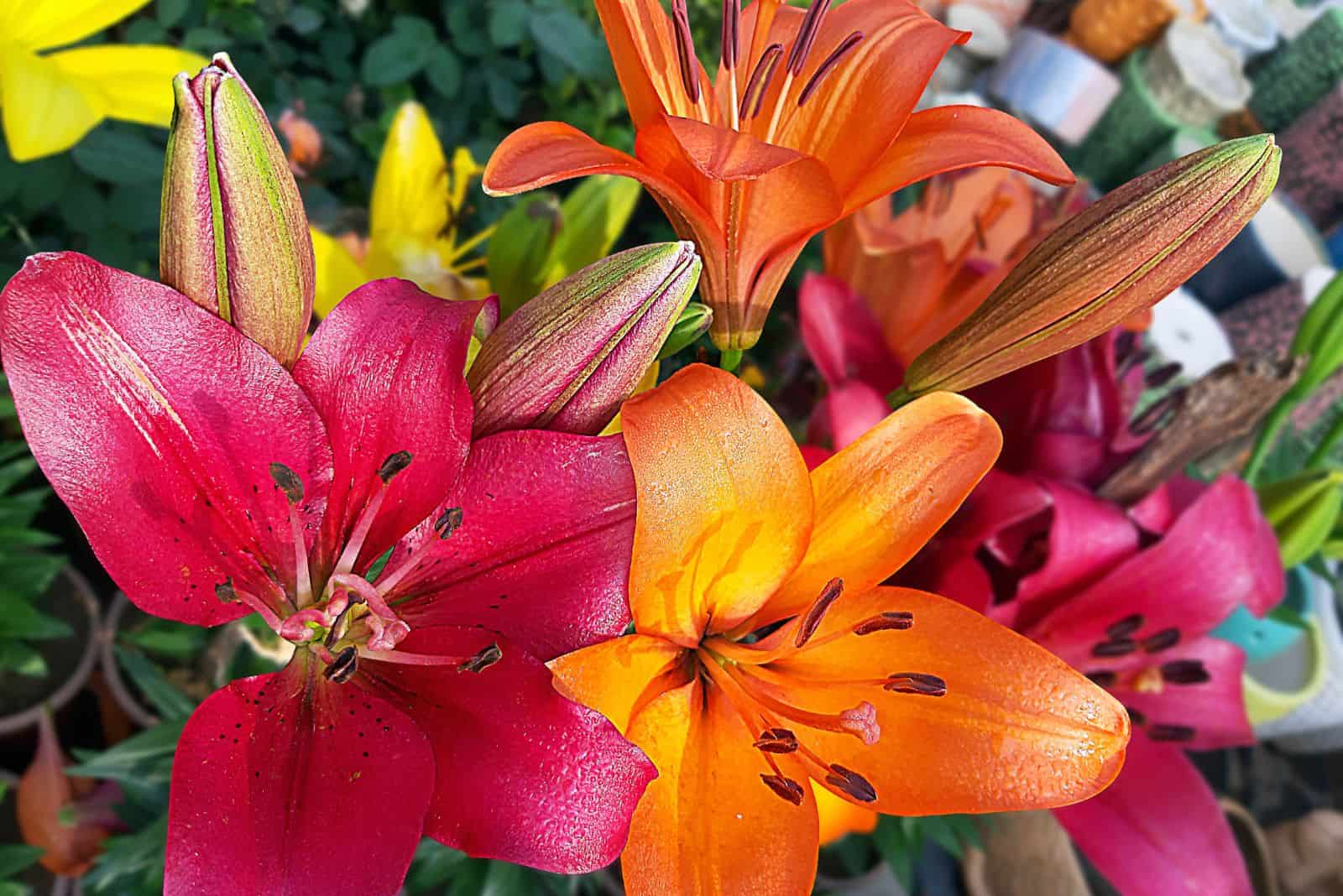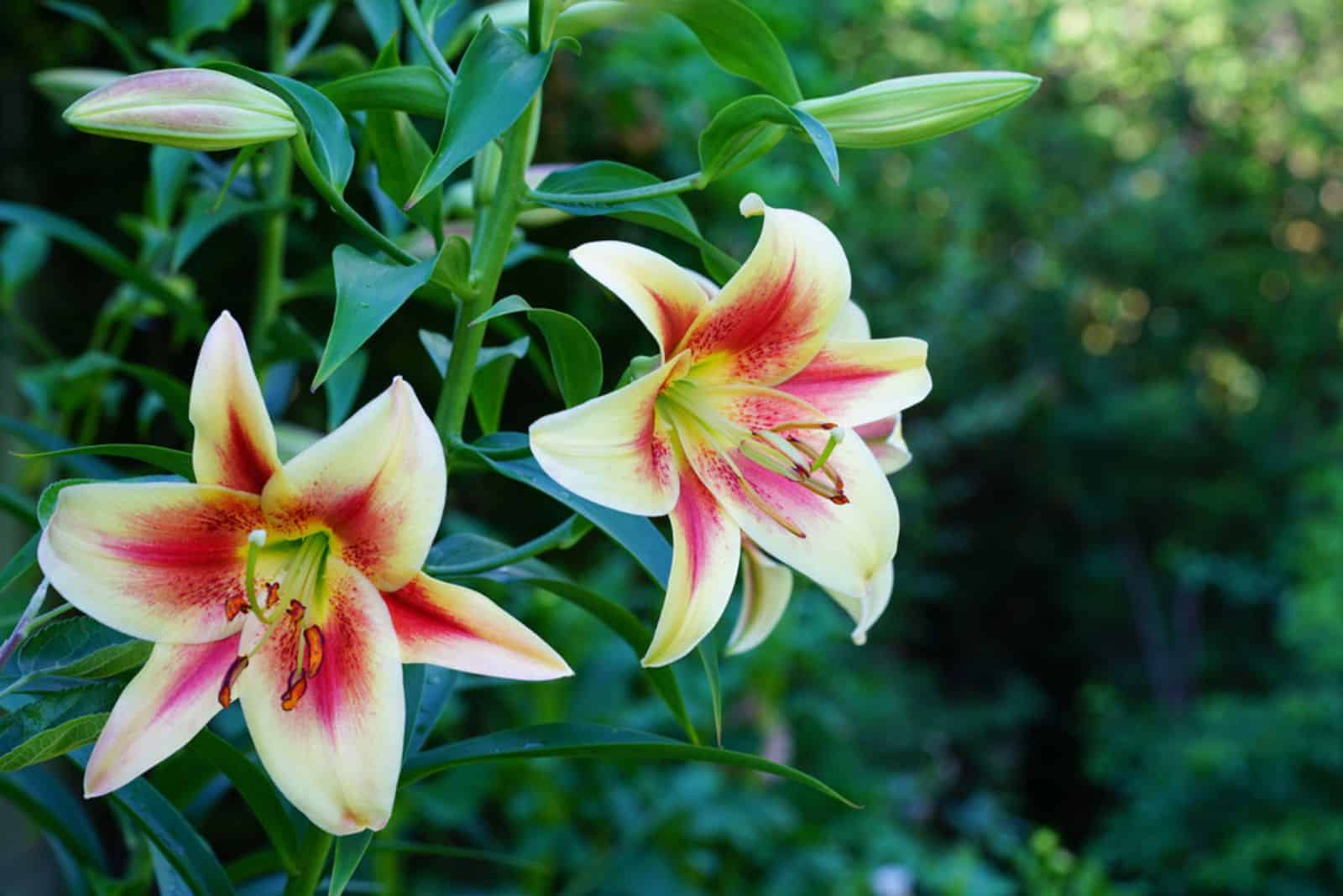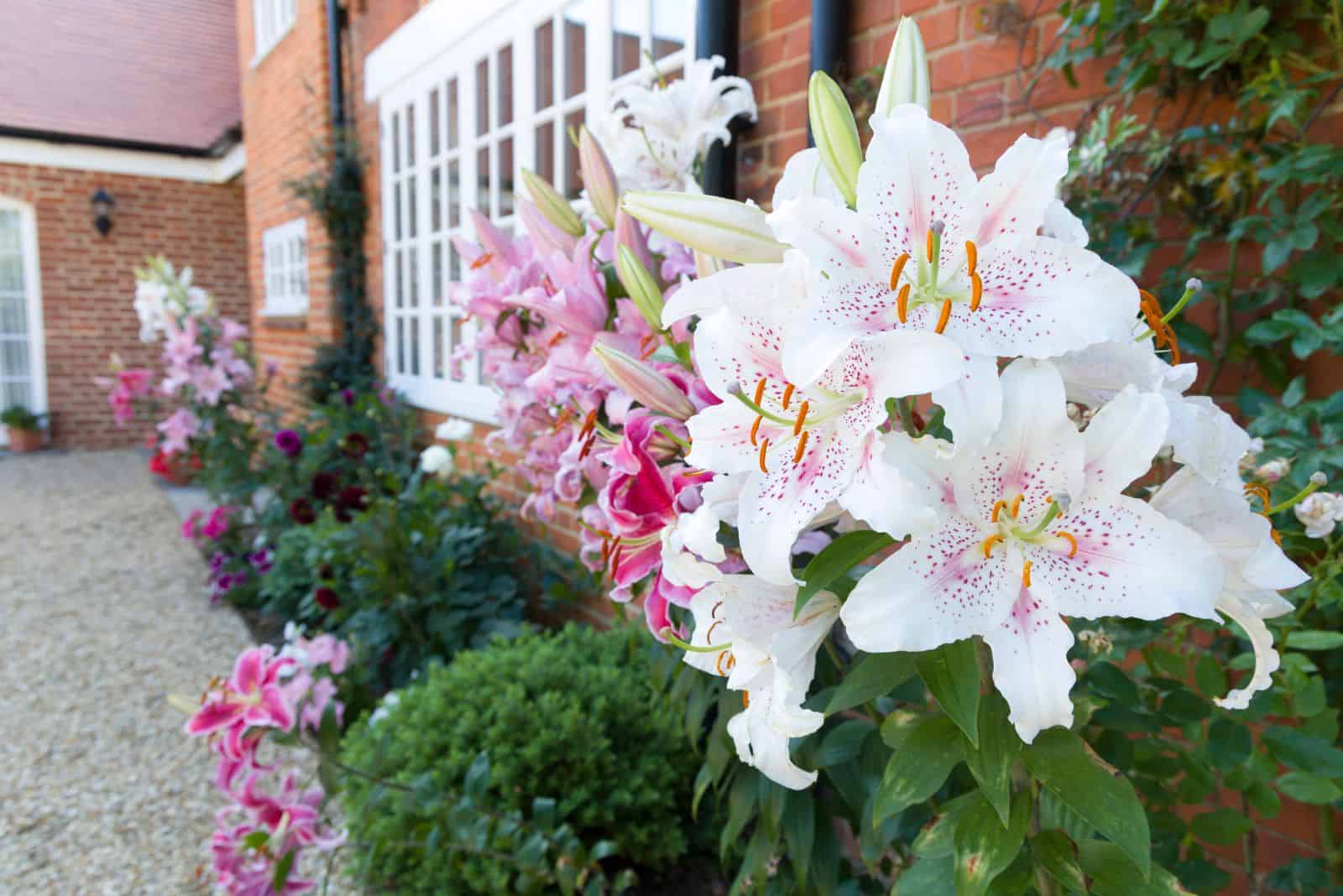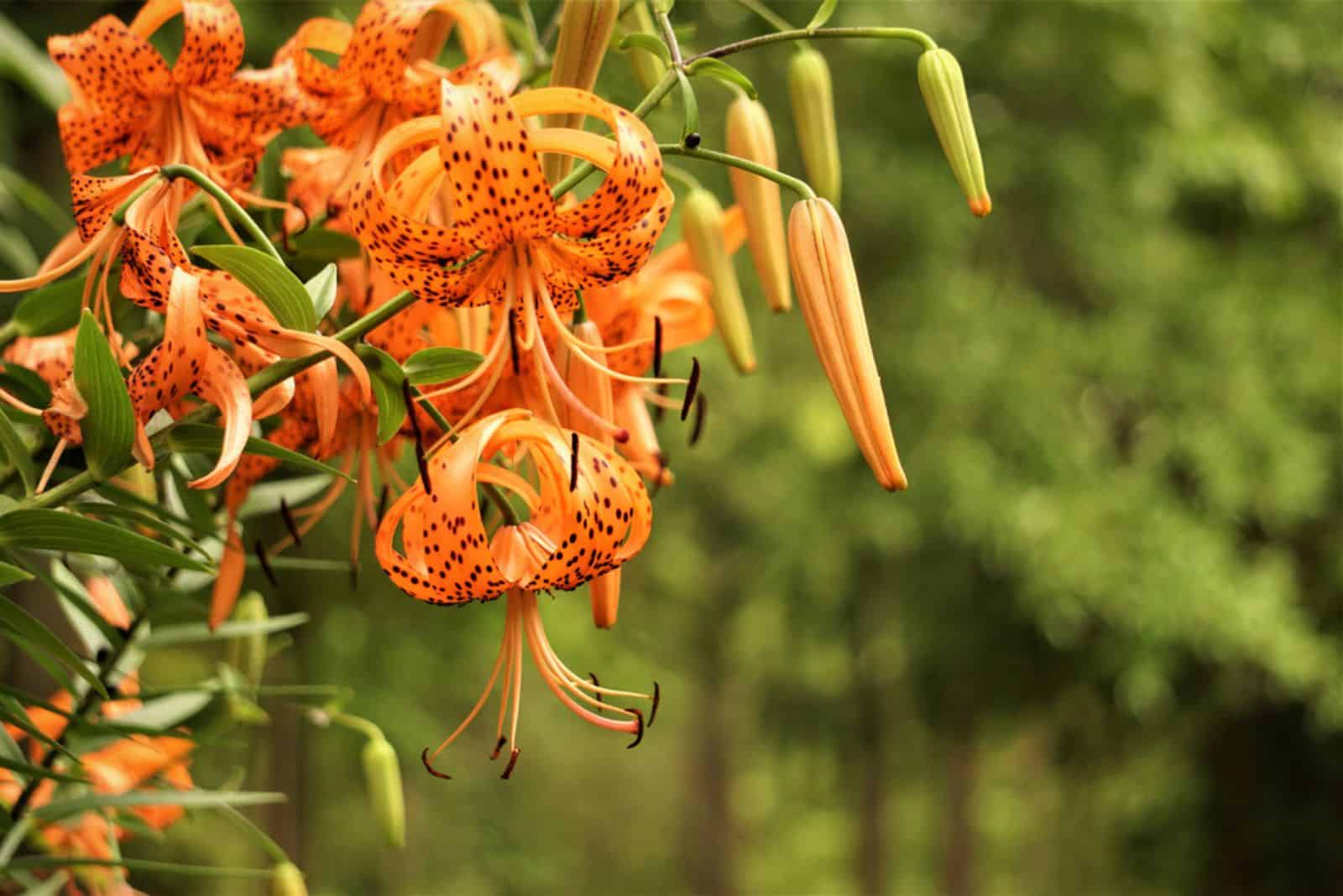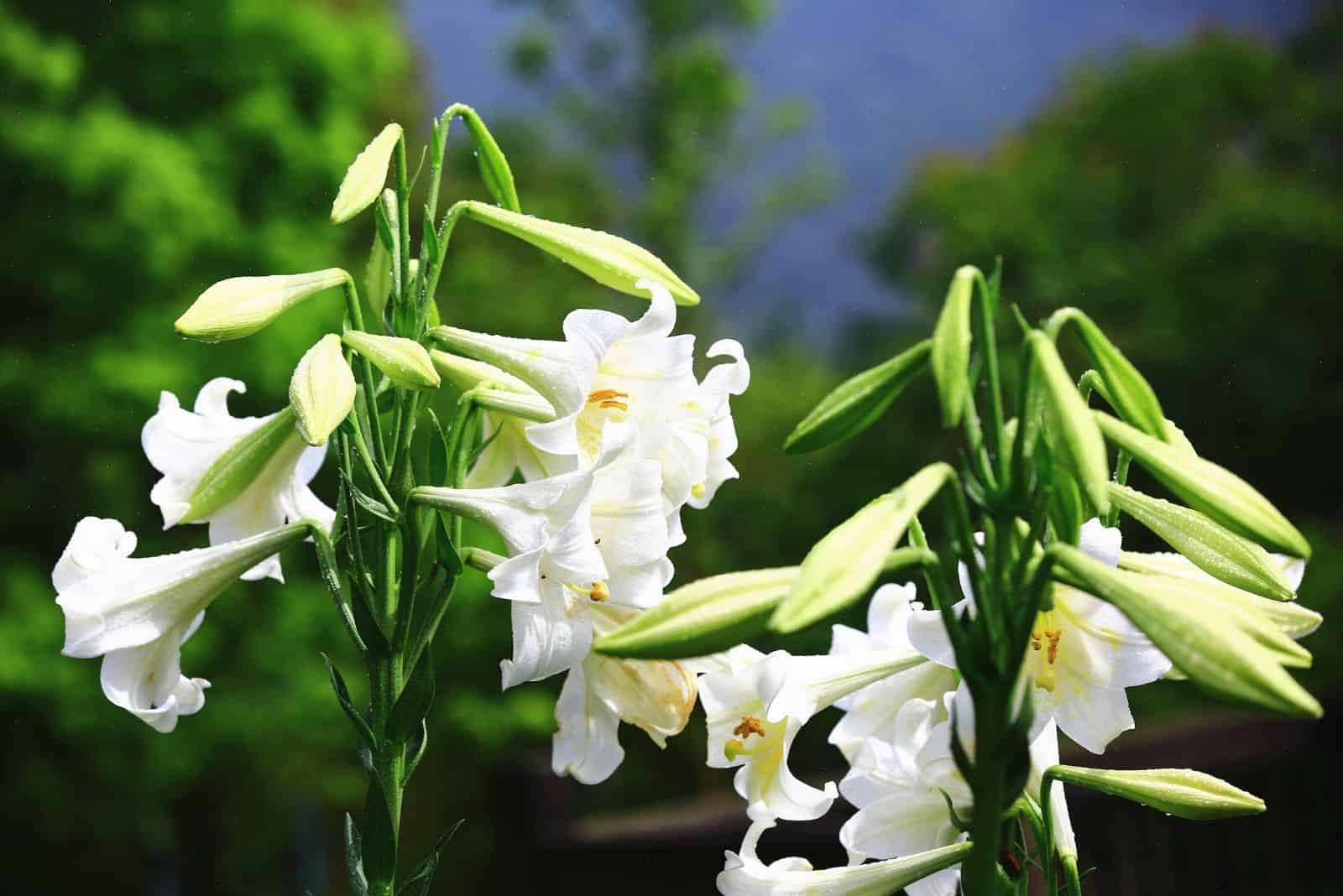Lilies are spectacular garden plants that can transform the look of any landscape and indoor home decor. Their fragrance is out of this world, and the colors they produce are unmatched (although, orchids will give them a good run for their money!).
But not all lilies are the same, and in this article, we’ll discuss cultivars of trumpet lilies and mention some hybrids you don’t want to miss out on.
And once you choose the best variety for you, you can learn about how to care for these plants in our care guide below.
6 Fragrant Cultivars Of Trumpet Lilies
Trumpet lilies are also known as Aurelian lilies, and are a favorite part of summer gardens all over the world.
There are many varieties out there, and below, you can find six exceptionally fragrant trumpet lily cultivars to enjoy.
Lilium ‘African Queen’
The Lilium ‘African Queen’ is a hybrid lily known for its large, showy flowers and sweet fragrance. Its trumpet flowers are typically a deep orange color with yellow centers and brown-red outer parts that appear in summertime.
The plant is 4-6 feet tall and an upright grower with long, narrow leaves that are deep green.
The African Queen is a hybrid of two lily species – Lilium longiflorum and Lilium sp. It is known for its strong, sturdy stems and its ability to tolerate a range of growing conditions (it is hardy in zones 4-8).
Lilium ‘Golden Splendour’
The flowers of the Lilium ‘Golden Splendour‘ are typically bright golden with burgundy outsides, a trumpet-like shape, and a strong, sweet fragrance.
The plant is 3-4 feet tall, thrives in USDA hardiness zones 4-8, and shows off its gorgeous blossoms in mid-late summer.
The Golden Splendour is a hybrid of several lily species, including Lilium regale and Lilium sp. Gardeners grow it in gardens and landscapes for its beautiful flowers and sweet fragrance, although it is also popular as a cut flower.
Lilium Longiflorum (Easter Lily)
There are two main cultivars of this species – White American and White Heaven.
Lilium longiflorum ‘White American’ flowers are typically a pure white color with a trumpet-like shape. It is native to Japan and can tolerate the climate conditions in zones 5-8.
The White Heaven cultivar has the same requirements as the White American, although its purely white blooms are slightly larger.
And unlike the White American, White Heaven has sturdier stems, so it doesn’t require staking.
Both plants are adorned with deep green foliage, and their bloom time extends from mid to late summer.
Lilium ‘Pink Perfection’
The deep pink trumpet blossoms and sweet fragrance of this cultivar will adorn your home in mid to late summer.
They are a combination of a couple of different species, including Lilium sp. and Lilium regale, and they produce 12-20 flowers on one stem.
They thrive in zones 4-9, have strong stems so they don’t require staking, and display narrow and dark green foliage throughout the year.
Lilium Regale
The Lilium regale is a species of lily that is native to China, which gardeners typically grow from bulbs.
It is known for its large, trumpet-shaped flowers, typically white with pink outer parts, and a strong fragrance.
The plant has tall, sturdy stems and lance-shaped leaves that are dark green. It can reach heights of up to 6 feet.
Like all lilies, all parts of the Lilium regale plant are toxic if ingested, so it is not recommended for households with young children or pets.
And if you want to preserve heirloom seeds, don’t grow this cultivar near other species where pollinators can mix them up.
Lilium Regale Album
This cultivar is known for its large, white, trumpet-shaped flowers that have a strong fragrance.
The flowers of the Lilium regale Album are typically pure white, although they may have hints of pale pink or yellow at the base of the petals.
Like other cultivars of Lilium regale, it has tall, strong stems and lance-shaped dark green foliage.
Other Lily Types
The good news is that there are many lily types out there, and you can find our favorite hybrids to create your very own lily mixture below.
And if you want to spice things up a bit, you can get Aurelian hybrids, which are a combination of Lilium henryi and trumpet lilies that take the breath away.
Asiatic Lilies
Asiatic hybrid lilies are breathtaking and belong to our list of tall potted plants for privacy. They are known for their wide range of colors, including shades of white, yellow, orange, pink, and red.
Unfortunately, they don’t have fragrance, although you can always grow another species or a hybrid to substitute this shortcoming.
Asiatic lilies generally have upright, strong stems and lance-shaped deep green leaves. They can grow up to 6 feet tall, although their size depends on the cultivar.
Orienpet Lilies
Orienpet lilies are a type of lily plant created by crossing Oriental lilies with trumpet lilies. Gardeners and collectors grow them for their magnificent blossoms and intense fragrance.
Orienpet lilies generally have upward-facing, trumpet-shaped flowers that are typically white, pink, or red.
The narrow, deep green, spear-shaped foliage rests on strong stems, which makes your job a lot easier as you don’t have to stake the plant.
This hybrid tolerates heat better than Aurelian lilies, but still has its color palate, which makes it one of the best species to grow.
Oriental Lilies
These Asian lilies are easily recognizable due to their large blossoms and intense scent. Their flowers face upwards and are typically white, pink, or red with a spotty pattern.
The good news is that they have a sturdy structure, so you won’t have to stake them in order to keep them upright.
They typically reach heights of 6 feet, but that depends on the variety you choose.
The bloom time for oriental lilies is usually in mid-to-late summer, although certain cultivars can bear blossoms in the fall.
Tiger Lilies
Tiger lilies are generally orange with black or brown spots, hence the name. They blossom in mid to late summer, but that period can extend into the fall.
And if you want to prolong their flowering period, you can simply deadhead spent blooms.
Tiger lilies have tall and sturdy stems clad in deep green and narrow foliage.
Trumpet Lily Plant Care
Just like all lilies, trumpet lilies require well-drained soil, full sun, and water once a week or so.
Of course, these requirements have more nuance, and we’ll discuss them more thoroughly in the following sections.
Light Requirements
Trumpet lilies are sun-loving plants that prefer full sun to partial shade. They do well in locations that receive at least 6 hours of direct sunlight per day, although they can tolerate some partial shade, especially during the hottest parts of the day.
It is crucial to keep in mind that the light requirements for trumpet lilies can vary depending on the specific cultivar and the climate in which they are being grown, so you should always check the needs of a particular species.
Water And Humidity
Water these lilies deeply once or twice a week, depending on the weather and soil conditions.
And to avoid overwatering and root rot, check the soil moisture level regularly by inserting your finger into the soil. Water the lilies when the top inch of the growing medium feels dry to the touch.
Furthermore, the worst time to water plants is midday because the moisture quickly evaporates, or late at night, as the risk of fungal diseases rises.
Instead, water the lilies in the morning or early afternoon, and they’ll thrive.
Finally, water the soil around your lily plants thoroughly, making sure to moisten it to a depth of at least 6 inches. Avoid wetting the foliage, as that can lead to leaf spot and powdery mildew.
Humidity
The ideal humidity level for trumpet lilies is around 50%. They generally prefer a moderate air moisture level. They do not need high humidity levels to thrive, but they do benefit from some moisture in the air, especially during the flowering period.
Humidity levels can vary significantly depending on the location, time of year, weather, and humidity levels inside your home.
You can increase air moisture levels by using a humidifier or misting the foliage every once in a while.
Temperature
These lilies prefer moderate daytime temperatures of around 70-80°F and nighttime temperatures of around 60-70°F, although they can tolerate hotter conditions (up to 90°F).
Some cultivars may be more sensitive to extreme conditions, so make sure to keep them in a location without sudden temperature changes (avoid places near heaters, AC vents, old windows, etc.).
Soil And Fertilizer
Trumpet lilies prefer nutrient-rich and well-draining soil. They do best in a growing medium that is slightly acidic to neutral with a pH of around 6.5-7.0, but they can tolerate alkalinity to some degree.
To prepare a substrate for trumpet lilies, you can mix some compost into your native soil to improve its structure and introduce organic material. Add some perlite or vermiculite for optimal drainage and to prevent waterlogging.
Finally, you can mulch trumpet lilies with compost or manure. (And if you want it to last, you should learn the differences between cedar and cypress mulch, and choose the one that fits your needs best.)
Fertilizer
The best fertilizer for trumpet lilies would be a balanced one such as 5-10-10 or triple 10. If you use liquid plant food, apply it once a month and dilute it in water to at least half-strength.
If you opt for slow-release fertilizers, apply them every three months or less frequently if indicated on the package.
Compost and well-rotted manure are also excellent choices, especially if you grow these plants in the ground. Apply them in early spring, and that’s enough.
Finally, remember to water your trumpet lilies after fertilization to make the nutrients available to the plant and avoid root rot.
Planting Trumpet Lily Bulbs
Step 1. Choose a location with well-draining soil and full sun to partial shade. You can also amend the growing medium with compost or well-rotted manure, and even perlite or vermiculite if it needs more drainage.
* If growing this plant in a container, choose a medium or large terracotta pot with drainage holes to prevent waterlogging, and fill it with a well-drained potting medium.
Step 2. Place the bulbs at a depth of about 6-8 inches, with the pointed end facing upward. Separate them about 6-8 inches apart, depending on their size. Add a good starter fertilizer to boost their growth.
Step 3. Water the soil around the lily bulbs thoroughly, making sure to moisten the soil to a depth of at least 6 inches.
Step 4. Cover the bulbs with a layer of mulch, such as straw or shredded leaves, to help retain moisture and suppress weeds.
Step 5. Water the lilies deeply once or twice a week, depending on the weather and soil conditions. Avoid overwatering, as this can lead to root rot.
Planting trumpet lily bulbs may be challenging, so here are some more tips that can help you do it successfully:
FAQ
Do trumpet lilies spread?
Yes, trumpet lilies spread on their own, so give them enough room to grow and fill your flower beds.
Are trumpet lilies perennial?
Trumpet lily plants are perennial in zones 4-8, although some are less hardy and cannot tolerate temperatures below zone 5.
When do trumpet lilies bloom?
Trumpet lilies typically bloom from mid to late summer, but some species can prolong that period and produce flowers in the fall as well.
Final Thoughts
There are many cultivars of trumpet lilies you can grow, and we brought our six all-time favorites. They’re fragrant, colorful, and can decorate any garden or indoor area.
We also presented a couple of other species you can grow trumpet lilies with to transform your landscape.
Finally, we included the main care tips so that you know how to grow and care for them properly and enjoy them for years to come.
Until next time!
Like this post? Share or pin it for later!

